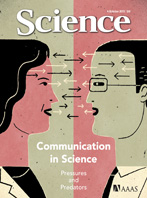Yesterday, we left off on a high note. Seemingly every stakeholder involved — from authors to audience, institutions to commercial publishers — are supportive of Open Access in one form or another. However, Open Access has yet to become the law of the land. What’s the hold up? Could it be that Open Access too good to be true?
While Open Access has many advocates it has garnered a fair amount of skepticism within the scholarly community. Perhaps the biggest bombshell to land on the movement fell just three weeks ago.In the journal Science, a report by biologist and journalist John Bohannon revealed that a faked scientific paper, riddled with intentional errors, had been
accepted by over 150 Open Access publications, representing more than a 50% success rate with his submissions. This caused an immediate
uproar among the OA community, with many commentators jumping to the
defense of OA and
questioning the validity of Bohannon’s study. And while it’s true that there is much to quibble over about how Bohannon conducted the study, it highlights some vulnerabilities of the OA movement.
The strongest indictment from Bohannon’s article — and the one leveled against OA most often — is of the lax peer-review methods of OA journals. Peer-review is an essential mechanism for ensuring the quality of published articles, but it can also a real drag on getting new research out to readers as quickly as possible. Many proponents of OA are looking to
alternatives to the traditional peer review process (rather than getting rid of peer review wholesale) to speed up publication and to rethink how peer review shapes what is and is not available to researchers.
In Bohannon’s study, he says in many instances his article was accepted with no sign of peer review. The biggest culprits were so-called “
predatory” journals, journals that are set up to take advantage of the “Gold” OA model, which asks authors (or the institutions they work for) to pay a fee for publication. These predatory journals are certainly bogus, and informing authors of the traps laid across the OA landscape by them is imperative. To say that there are bad OA journals out there is
nothing new. In fact, to say that there are junky, predatory journals of any kind is a conversation that’s been happening for decades now. However, predatory journals have certainly received a great deal of attention within OA, and Science’s major “expose” is certain to stir up much conversation, probably not all of a positive kind.
In addition to questions regarding the quality of OA journals, many have begun to question if they are best served by publishing OA. As mentioned yesterday, concerns over promotion, tenure, academic freedom, and the like, play an important role in the debate surrounding Open Access. For young scholars, these matters are often out of their hands. Which is to say that if they wish to enjoy the benefits of promotion, etc., they will likely have to play by the rules of the body that grants them. The criteria for promotion will vary from institution to institution, but many worry that OA publishing is
looked upon with distrust or skepticism. And many young faculty-members, some of whom would plant their flag firmly in the OA camp, must sacrifice their philosophical stance in deference to the demands of their career (or vice-versa, as the case may be). Alongside this, some are casting a skeptical eye towards mandatory electronic submission of dissertation policies found at many institutions. These policies, generated with the best of intentions for making research freely available, have begun to have unintended consequences for PhD students. In response to concerns about the adverse effect dissertation-submission policies have on new graduates’ job placement, the American Historical Association has suggested
a six year embargo for all history PhD dissertations. The AHA’s policy statement
ignited a debate among academics, librarians, and administrators about the role OA plays in PhDs career advancement. Some argue that publishers are discouraged from signing on authors to revise their dissertation for publication if it is already available freely online, hindering the authors’ ability to land a teaching position. On the other side of the debate, OA advocates point to larger structural problems — not the open availability of graduate work — that add to new PhD’s professional struggles.
Is the system broken? Is OA nothing more than a pipe dream? Clearly not, but in order for it to move forward, it has to be done with a critical eye on the weaknesses in the OA system — something that can be challenging when OA seems to offer such a positive alternative to the dominant proprietary landscape. I’ll wrap things up with links to two posts that take on the OA movement’s sometimes un-self-critical stance. Neither author — J. Britt Holbrook and Diane Harley — is an opponent of OA. However, both offer up the idea that the conversation around OA (and other alternatives to the traditional publishing cycle) might be reframed and brought to a more localized level (as opposed to the “totalizing” doctrine Holbrook sees governing the OA movement). It’s certainly food for thought as things move ahead. The traditional scholarly publishing cycle served the academy and researchers well for many years, but it shouldn’t be impervious to change. At the same time, it may not be in need of a wholescale transformation. Just a fair amount of tweaking.


